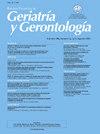智利圣地亚哥老年人积极活动模式特征分析
Q3 Medicine
引用次数: 0
摘要
老年人是世界上增长最快的群体。然而,在文献和公共政策中,他们的流动模式往往被忽视。为了更好地了解老年人的流动性,本研究的目的是通过对2012年全市始发地-目的地调查的分析,表征智利圣地亚哥老年人的主动流动性。方法对圣地亚哥这个高度分散和不平等的城市的34个社区(约700万人)进行分析。为了进行处理和分析,我们选择了社会人口学变量——性别、年龄、经济收入——以及与流动性相关的变量——旅行目的、旅行距离、旅行时间、旅行方式。使用Microsoft Excel进行数据整合和图表生成,使用IBM SPSS Statistics 25进行重新编码,创建分析变量和控制变量,并进行统计处理。结果结果显示,老年人在高峰时段以外进行的与护理相关的出行次数(占出行次数的43%)高于其他人群,并且以步行为主的主动出行方式所占比例更高。积极模式的流行程度与收入呈负相关,在低收入社区更占主导地位。最后,结果表明,70%的老年人出行距离小于5公里,48%的老年人出行距离小于2公里。从这个意义上说,老年人的大部分旅行都是在他们的社区内进行的。上述情况对针对老年人的公共政策和城市卫生提出了重大挑战,特别是在城市设备、绿地、商业或社区设备的投资以及安全适宜的老年人人行道的设计方面。对于智利的城市来说,建设一个就近的城市和适合老年人的街道似乎是一个紧迫的挑战。本文章由计算机程序翻译,如有差异,请以英文原文为准。
Characterizing active mobility patterns of older people in Santiago de Chile
Introduction and objectives
Older people represent the fastest growing group worldwide. However, their mobility patterns have often been neglected in the literature and in public policies. To better understand the mobility of older persons, the objective of this study is to characterize the active mobility of older people in Santiago de Chile, through an analysis of the citywide Origin-Destination Survey of 2012.
Methods
The analysis involved the 34 communes of Greater Santiago (about 7 million), a highly fragmented and unequal city. For processing and analysis, sociodemographic variables were selected – gender, age, economic income – along with variables related to mobility – travel purpose, distance travelled, travel time, mode of travel. Microsoft Excel was used to consolidate data and produce tables and graphs, while IBM SPSS Statistics 25 was used for recoding, creation of analysis variables and control variables, plus statistical processing.
Results
Results show that older people make a greater number of care-related trips (43% of trips), outside of peak hours, and with a higher proportion of active modes (mainly walking) than other groups. The prevalence of active modes is inversely related to income, being more dominant in low-income communes. Finally, results indicate that 70% of trips taken by older people are less than 5 km, with 48% less than 2 km. In this sense, older people are making most of their trips within their neighborhoods.
Conclusions
The above poses significant challenges for public policy and urban health aimed at the elderly, especially regarding investment in urban equipment, green areas and commercial or community equipment, as well as the design of safe and suitable sidewalks for the elderly. Building a city of proximity and age-friendly streets seems to be an urgent challenge for Chilean cities.
求助全文
通过发布文献求助,成功后即可免费获取论文全文。
去求助
来源期刊

Revista Espanola de Geriatria y Gerontologia
Medicine-Medicine (miscellaneous)
CiteScore
1.90
自引率
0.00%
发文量
62
审稿时长
85 days
期刊介绍:
Una revista de gran prestigio por sus artículos originales de investigación y revisiones. Permite cubrir todas las áreas de la medicina pero siempre desde la atención al paciente anciano, y está presente en los más reconocidos índices internacionales.
 求助内容:
求助内容: 应助结果提醒方式:
应助结果提醒方式:


